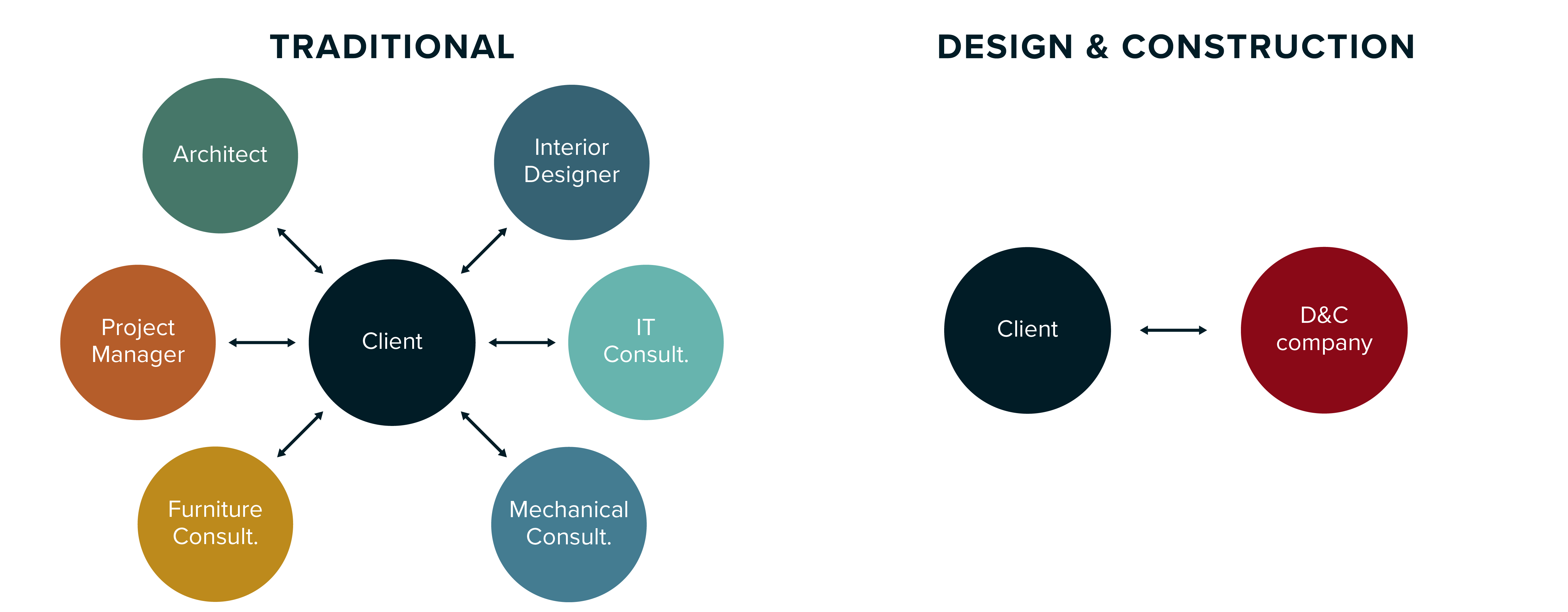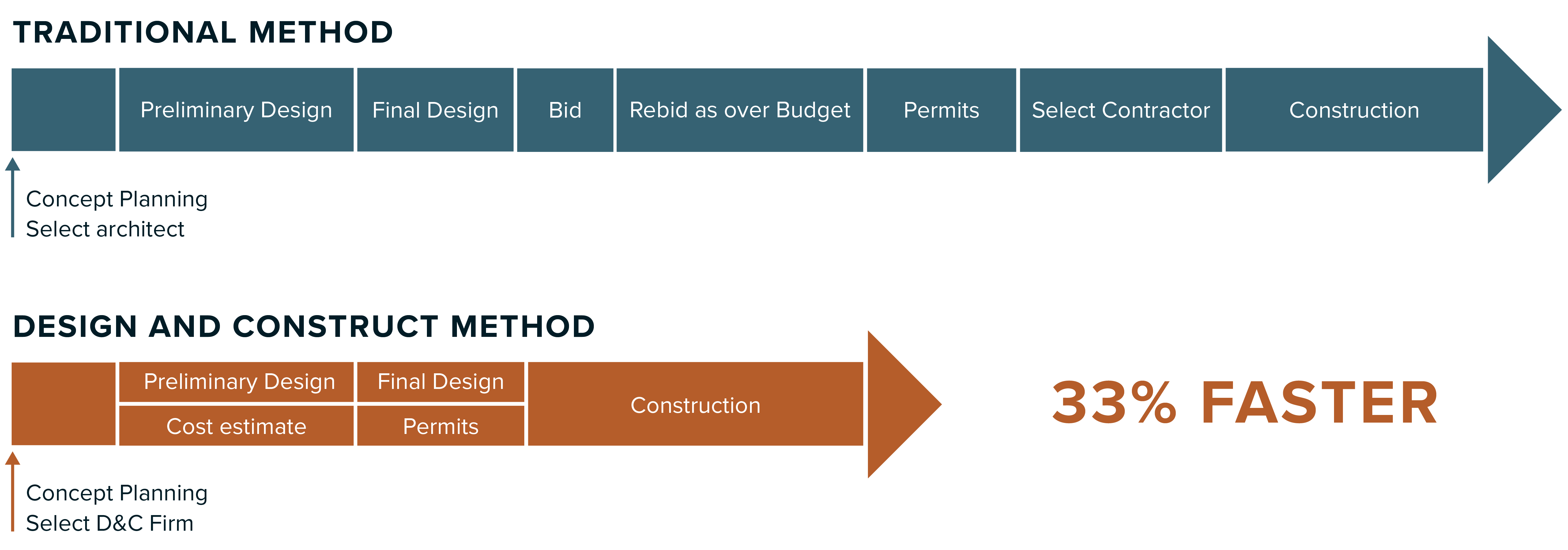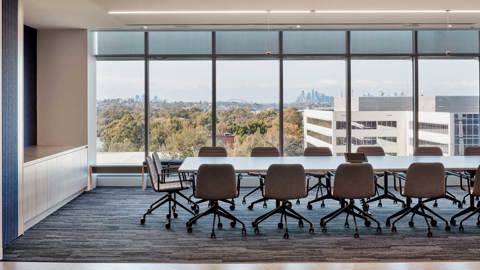The destination is the same, but the journey experienced by the client is vastly different
Custom office design vs traditional fitouts
When it comes to office renovations in Sydney or Melbourne, you have the choice of design and build vs conventional office fitouts. The destination is the same, but the client journey is vastly different. Let’s explore these two options for office fitouts so you can find the best plan for your

Traditional office fitouts
With a traditional fit out, the client needs to consult with several involved parties on their own. Clients must manage the architect, interior designer, IT consultant, project manager, furniture consultant, and mechanical consultant, with none of these parties interacting or planning together. That’s a lot of resources to manage, and it can get overwhelming at times.
Design and construct office fitouts
With a design and construct (D&C) company, there are fewer parties involved. It’s just the D&C specialist and the client, offering comprehensive solutions to achieve the best office interior design. Design and construct companies are known for speeding up the process to deliver streamlined and customised office renovation solutions.
Breakdown of project efficiency

Source: oktra.co.uk
With the traditional method of office fitouts, there are many steps, including:
- Concept planning and architect selection
- Preliminary design
- Final design
- Bid
- Rebid as over budget
- Permits
- Select contractor
- Construction
The design and construct method is 33% faster, according to Oktra.co.uk, with several steps moving forward at the same time:
- Concept planning and selecting D&C firm
- Preliminary design and cost estimate
- Final design and permit
- Construction
Ready to Fitout your Office?
Thinking about updating your office space? At Crest Office Interiors, we specialise in workplace strategy, design, and construction and will work with you to bring your vision to life
Let’s chat! Schedule your free consultation and see what’s possible.


